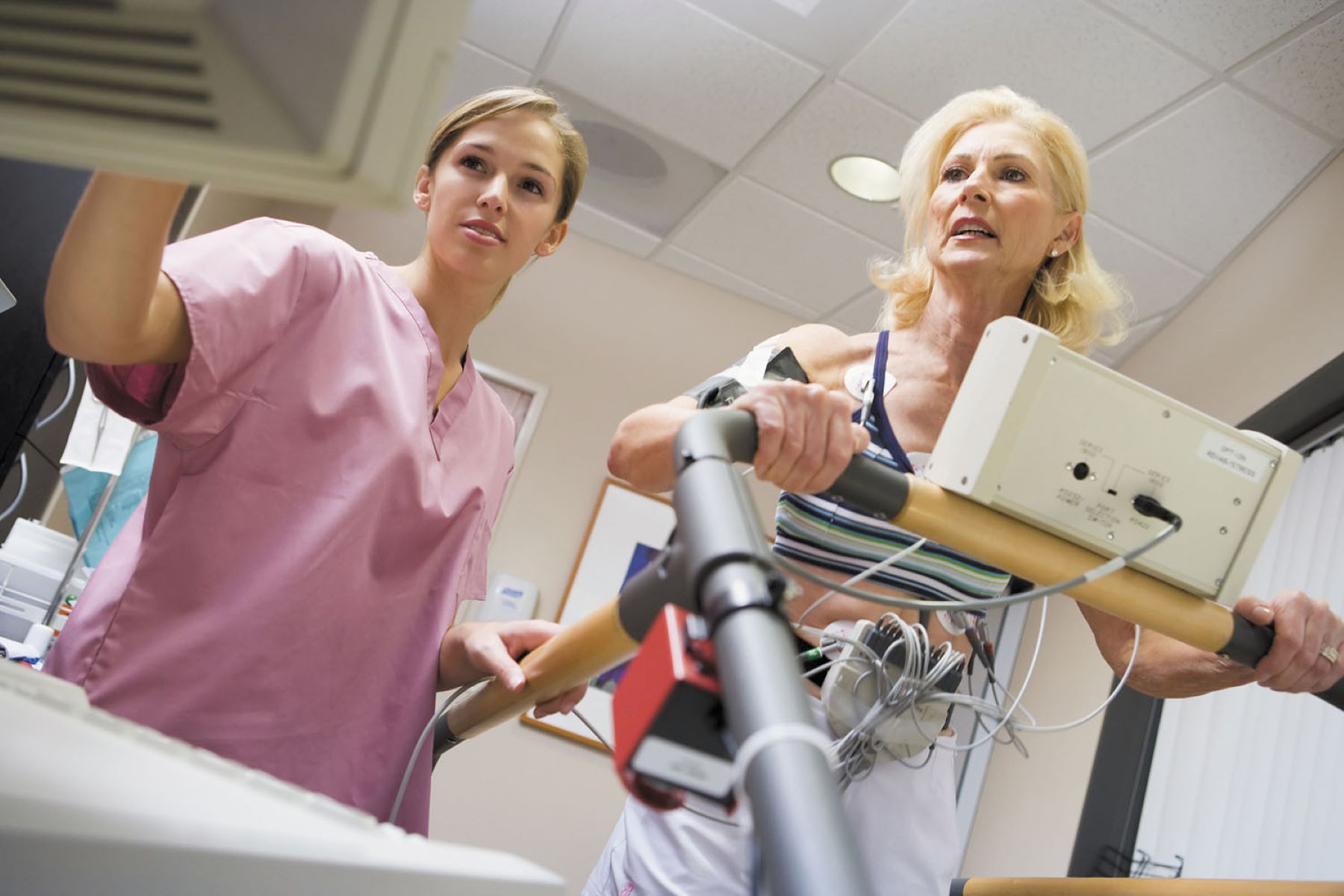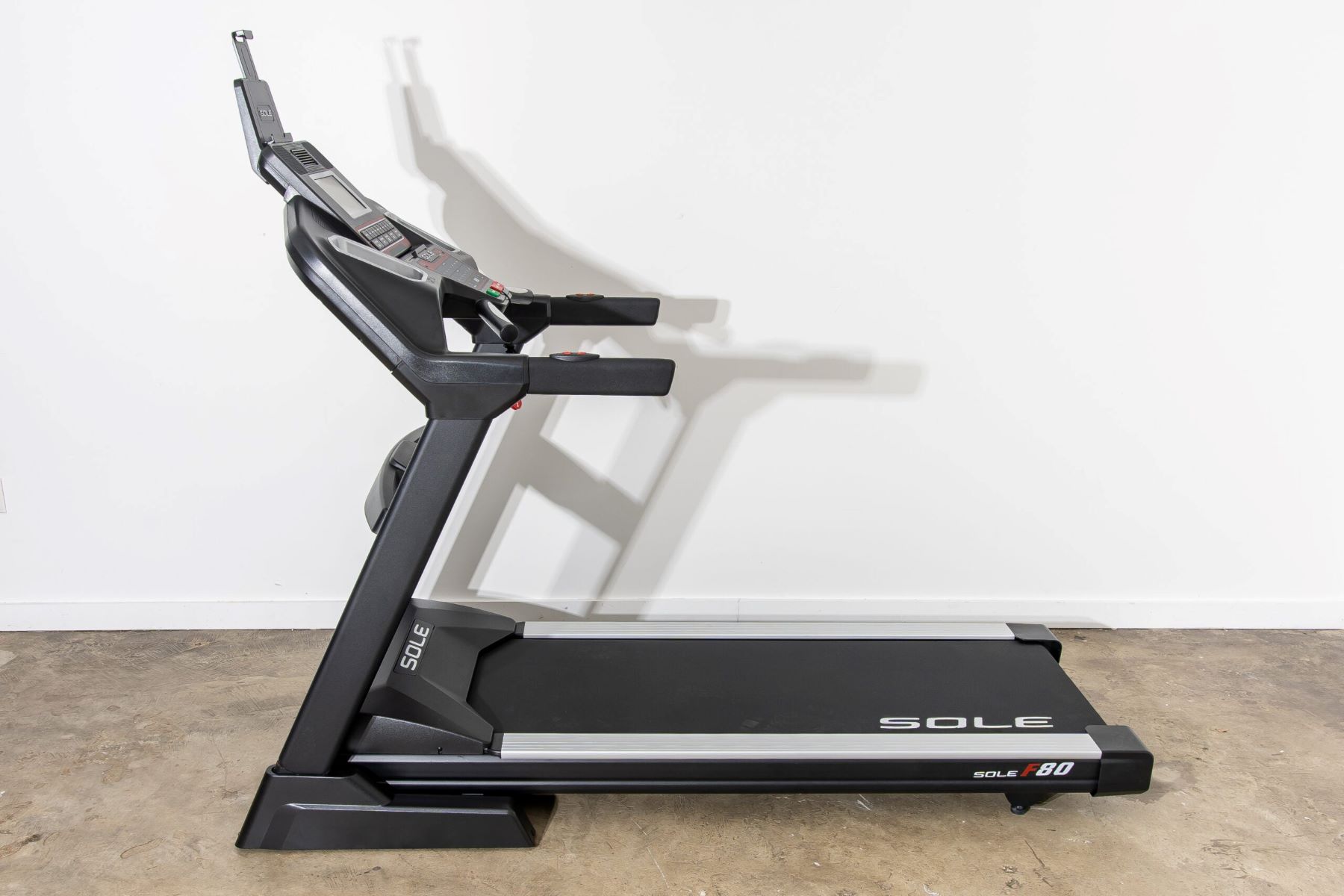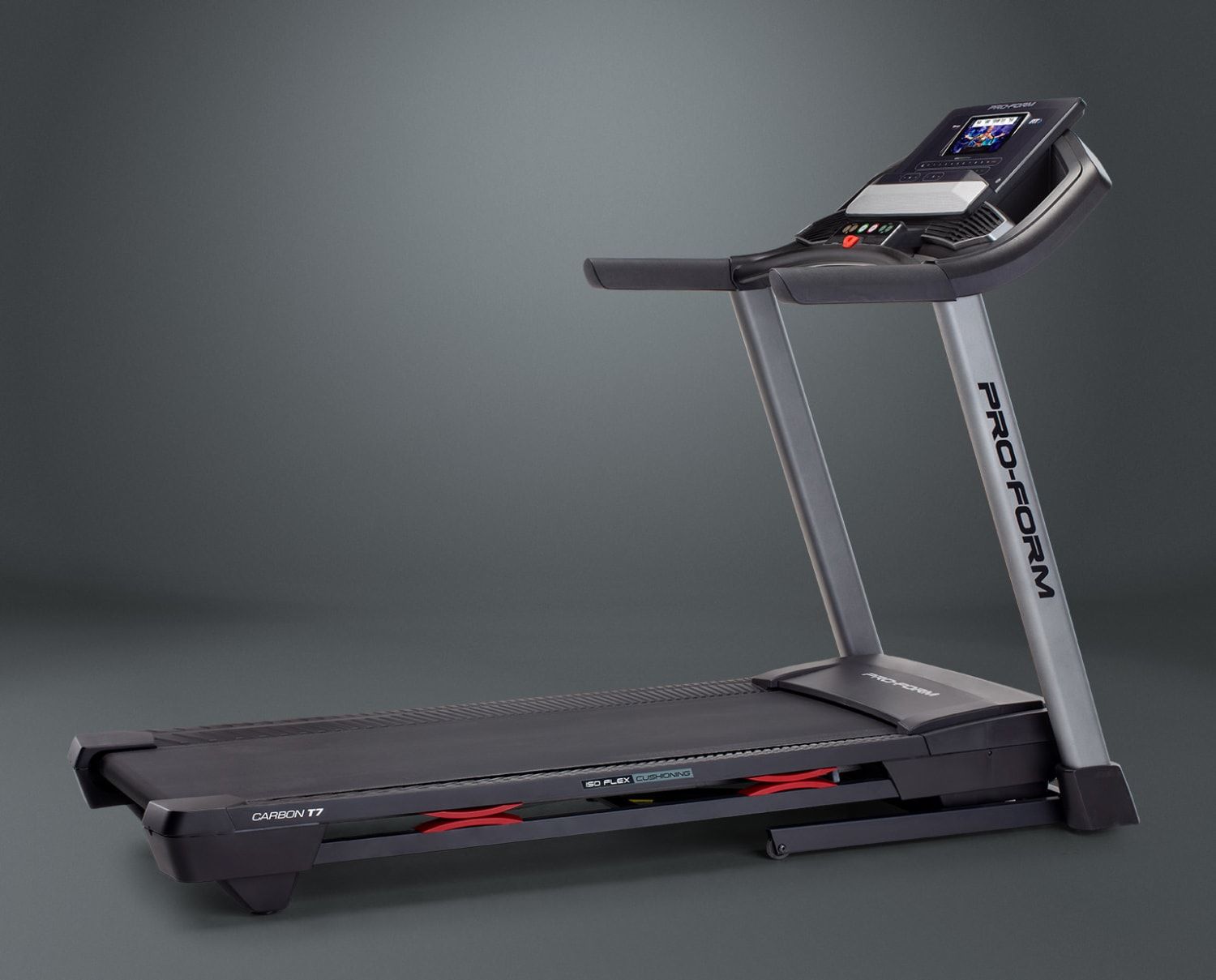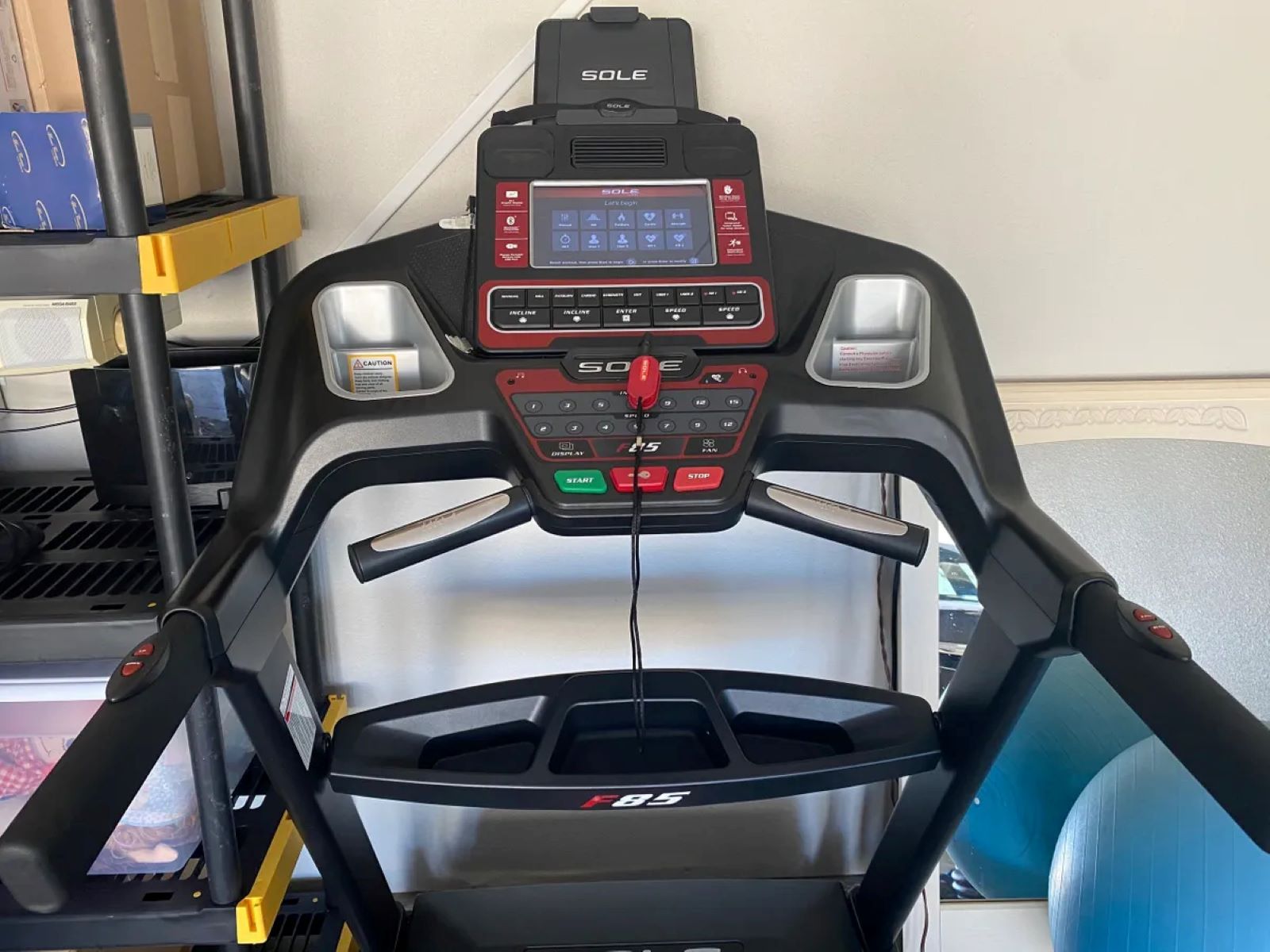

Featured
How Does A Treadmill Stress Test Work
Modified: January 2, 2024
Learn how a treadmill stress test works and why it is a featured method for evaluating cardiovascular health.
Introduction
A treadmill stress test is a medical procedure that is used to assess the function and performance of the heart. It involves monitoring the heart’s response to physical activity by having the patient walk or run on a treadmill while their heart rate, blood pressure, and electrocardiogram (EKG) are closely monitored. This test is commonly performed to evaluate the presence of coronary artery disease, also known as blocked arteries, or to assess the effectiveness of certain heart medications.
During a treadmill stress test, the body is put under controlled stress to simulate the demands placed on the heart during physical activity. This helps doctors identify any abnormalities in heart function, such as inadequate blood flow to the heart muscle. By measuring the heart’s response to exercise, doctors can diagnose heart conditions, evaluate the effectiveness of treatment, and determine a patient’s capacity for physical activity.
Treadmill stress tests are widely used because they are non-invasive and provide valuable information about the heart and blood circulation. This procedure is typically performed in a hospital or clinic under the supervision of a healthcare professional, such as a cardiologist or a technician trained in cardiac testing.
In this article, we will explore how a treadmill stress test works, why it is performed, the preparation needed, the procedure itself, and the interpretation of the results. We will also discuss the potential risks and limitations associated with this test.
What is a Treadmill Stress Test?
A treadmill stress test, also known as an exercise stress test or a cardiac stress test, is a diagnostic procedure used to evaluate the heart’s response to physical activity. It involves monitoring the heart’s electrical activity, blood pressure, and heart rate while the patient exercises on a treadmill.
The purpose of a treadmill stress test is to assess the overall health and function of the heart, particularly its ability to pump blood efficiently during periods of increased demand, such as during exercise. This test is commonly used to diagnose and evaluate coronary artery disease, detect abnormalities in heart rate or rhythm, assess the effectiveness of medications, and evaluate a patient’s overall cardiovascular fitness.
During the test, the patient will walk or run on a treadmill while being closely monitored by medical personnel. The treadmill starts off at a low speed and gradually increases in both speed and incline, simulating the demands of exercise on the heart. The patient’s heart rate, blood pressure, and electrocardiogram (EKG) readings are continuously monitored throughout the test.
The EKG readings provide valuable information about the electrical activity of the heart. Abnormalities in the heart’s electrical signals can indicate underlying heart conditions, such as blocked arteries, arrhythmias, or inadequate blood supply to the heart muscle.
A treadmill stress test is typically performed in a controlled environment, such as a hospital or clinic, under the supervision of a trained healthcare professional. The duration of the test can vary, but it is usually completed within 10 to 15 minutes.
Before undergoing a treadmill stress test, patients may be asked to refrain from eating, drinking, smoking, or taking certain medications. It is important to follow any pre-test instructions given by the healthcare provider to ensure accurate results.
In the next section, we will explore the reasons why a treadmill stress test is performed and the specific indications for this diagnostic procedure.
Why is a Treadmill Stress Test Performed?
A treadmill stress test is performed for various reasons in order to diagnose and evaluate certain heart conditions. Here are some of the common indications for this test:
1. Diagnosing Coronary Artery Disease (CAD): One of the primary reasons for performing a treadmill stress test is to evaluate the presence of coronary artery disease. CAD occurs when the arteries that supply blood to the heart become narrowed or blocked by plaque buildup. During exercise, the heart requires more oxygen-rich blood, and if there are blockages in the arteries, the heart may not receive adequate blood flow. A stress test can detect abnormal changes in the EKG readings, indicating reduced blood flow to the heart muscles, which may suggest the presence of CAD.
2. Assessing the Effectiveness of Medications: A treadmill stress test can also be used to evaluate the effectiveness of medications that are prescribed to control or manage heart conditions. By monitoring the heart’s response to exercise while on medication, doctors can assess whether the medication is adequately controlling symptoms and improving heart function.
3. Evaluating Cardiovascular Fitness: Another reason for performing a treadmill stress test is to assess a patient’s cardiovascular fitness level. By measuring heart rate, blood pressure, and EKG readings during exercise, doctors can determine the individual’s capacity for physical activity and tailor exercise programs accordingly.
4. Detecting Abnormal Heart Rhythms: An exercise stress test can also help identify abnormal heart rhythms, known as arrhythmias. During the test, changes in the EKG readings may indicate irregular heartbeats or abnormal electrical activity, providing valuable information for diagnosing and managing arrhythmias.
5. Monitoring the Progression of Heart Conditions: For patients with known heart conditions, such as heart failure or previous heart attacks, periodic treadmill stress tests may be performed to monitor the progression of the disease, assess the effectiveness of treatments, and adjust medications or interventions as needed.
Overall, a treadmill stress test is a valuable diagnostic tool for evaluating heart function and diagnosing various cardiovascular conditions. By assessing the heart’s response to exercise, doctors can gather important information to guide treatment decisions and improve patient outcomes.
Preparation for the Test
Before undergoing a treadmill stress test, there are certain preparations that need to be made to ensure accurate results. Here are some important steps to follow:
1. Medical History Review: Your healthcare provider will review your medical history and ask about any existing heart conditions, medications, or symptoms you may be experiencing. It is important to provide accurate and detailed information to help guide the test and interpret the results.
2. Medication Instructions: Inform your healthcare provider about any medications you are currently taking. Some medications, such as beta-blockers or calcium channel blockers, may need to be temporarily stopped before the test, as they can interfere with the heart’s response to physical activity. Follow your healthcare provider’s instructions regarding medication use before the test.
3. Pre-Test Instructions: You may be advised to avoid eating or drinking for a period of time before the test, usually for a couple of hours. This is to prevent any discomfort or complications that might arise during the exercise portion of the test.
4. Comfortable Clothing and Shoes: Wear loose, comfortable clothing and appropriate athletic shoes for the test. Avoid clothing with metal zippers, buttons, or hooks, as these can interfere with the EKG readings.
5. No Caffeine or Smoking: It is advisable to avoid consuming caffeinated beverages, such as coffee or energy drinks, before the test, as caffeine can elevate heart rate and blood pressure. Similarly, it is recommended to refrain from smoking for at least a few hours prior to the test, as smoking can affect lung function and cardiovascular performance.
6. Emotional and Mental Preparation: It is normal to feel anxious or nervous before the test. Engage in relaxation techniques, such as deep breathing exercises or listening to calming music, to help reduce stress and promote a more accurate assessment of your heart’s performance.
7. Inform the Medical Team: Make sure to inform the medical team if you are experiencing any symptoms, such as chest pain, shortness of breath, or dizziness, before or during the test. This allows them to monitor you closely and take appropriate action if necessary.
It is important to follow all preparation instructions provided by your healthcare provider to ensure a successful and safe treadmill stress test. By being well-prepared, you can help ensure accurate results and a smooth testing experience.
Procedure of a Treadmill Stress Test
The procedure for a treadmill stress test involves several steps to assess the heart’s response to physical activity. Here is a general outline of what to expect during the test:
1. Preparation: The healthcare provider or technician will attach electrodes, small adhesive patches with wires, to various locations on your chest and limbs. These electrodes are connected to an electrocardiogram (EKG) machine that records the electrical activity of your heart throughout the test.
2. Baseline Measurement: Before starting the exercise portion of the test, the medical team will measure your resting heart rate, blood pressure, and may perform an initial EKG to establish a baseline reading. These measurements help evaluate your heart’s function before exertion.
3. Exercise Portion: You will be asked to walk or run on a treadmill that gradually increases in speed and incline, simulating the demands of exercise. The goal is to elevate your heart rate and maintain it for a specific duration. As you exercise, the medical team will closely monitor your heart rate, blood pressure, and EKG readings to assess the heart’s response to the activity.
4. Care and Support: The healthcare provider or technician will closely observe you for any signs of fatigue, shortness of breath, dizziness, or chest discomfort during the test. They will be there to provide support and assistance if needed.
5. End of Exercise: Once the desired level of exercise has been achieved, the medical team will gradually decrease the speed and incline of the treadmill to bring you to a stop. They will continue monitoring your vital signs and EKG until your heart rate returns to a near resting state.
6. Post-Test Evaluation: After the test, the healthcare provider will review the collected data, including heart rate, blood pressure, and EKG readings. They will evaluate any changes or abnormalities in the heart’s response to exercise and interpret the results in the context of your medical history and symptoms.
The duration of the treadmill stress test can vary depending on the specific protocol and the individual’s exercise capacity. Typically, the test lasts between 10 to 15 minutes, but it may be shorter or longer based on your fitness level and test objectives.
It is important to communicate any symptoms or discomfort you may experience during the test to the medical team. They are there to ensure your safety and well-being throughout the procedure.
Interpreting the Results
Interpreting the results of a treadmill stress test requires the expertise of a healthcare professional, typically a cardiologist or a trained technician. They will analyze various factors to evaluate the overall performance of your heart during the test. Here are some key aspects that are taken into consideration when interpreting the results:
1. Heart Rate: The heart rate response during exercise is an essential parameter. A healthy heart should increase its rate to meet the demands of physical activity. Abnormalities in heart rate, such as a slower or faster than expected increase, may indicate underlying conditions or cardiovascular issues.
2. Electrocardiogram (EKG) Readings: The EKG provides detailed information about the electrical activity of the heart throughout the test. The presence of abnormal EKG changes, such as ST-segment depression or elevation, can suggest inadequate blood flow to the heart muscle, which may be indicative of coronary artery disease.
3. Blood Pressure: Monitoring blood pressure during the test helps assess how well the heart is functioning under exertion. Significant increases or reductions in blood pressure may indicate problems with blood flow or heart function.
4. Exercise Capacity: The distance covered or the duration of the exercise achieved before any symptoms, such as chest pain or shortness of breath, develop is an important measure of exercise tolerance and cardiovascular fitness. A lower exercise capacity may indicate potential limitations or underlying conditions.
5. Symptoms and Response: Any symptoms experienced during the test, such as chest discomfort or shortness of breath, are closely observed and recorded. The presence or absence of symptoms and the response to exercise can provide vital information about the overall health and function of the heart.
All these factors are taken into account collectively to determine the interpretation of the stress test results. The results may be classified as normal or abnormal, depending on the findings and the specific parameters measured.
An abnormal stress test result may warrant further investigations, such as additional cardiac imaging tests (e.g., echocardiogram or nuclear imaging) or a coronary angiogram, to obtain more detailed information about the coronary arteries and assess the extent of any blockages or abnormalities.
It is important to discuss the results with your healthcare provider to gain a thorough understanding of their implications, as they will provide guidance for appropriate treatment or further diagnostic steps if necessary.
Risks and Limitations of a Treadmill Stress Test
Although a treadmill stress test is generally considered safe and non-invasive, there are certain risks and limitations to be aware of. Understanding these can help you make an informed decision and manage expectations regarding the test. Here are some important considerations:
1. Potential Risks: The risk of complications during a treadmill stress test is generally low. However, there is a slight possibility of experiencing certain risks, such as chest pain, irregular heart rhythms, dizziness, or even a heart attack in rare cases. These risks are higher among individuals with pre-existing heart conditions or who have an increased risk of heart disease.
2. Physical Limitations: Some individuals may have physical limitations that prevent them from safely performing the exercise portion of the stress test. This includes people with severe arthritis, joint pain, or certain mobility issues. In such cases, alternative stress test methods, such as pharmacological stress tests, may be considered.
3. False Negative or False Positive Results: A treadmill stress test has limitations in terms of accuracy. In some cases, the test may fail to detect significant coronary artery disease, resulting in a false negative result. Conversely, there is also a possibility of false positive results, where the test may suggest the presence of heart disease when there is none. Additional diagnostic tests may be required to confirm or refute the initial findings.
4. Physical Fitness Level: The accuracy of the test may vary depending on the physical fitness level of the individual. Highly fit individuals might demonstrate abnormal EKG changes during exercise due to their increased heart rate and cardiac output. This may lead to unnecessary concerns or further testing. On the other hand, individuals with poor fitness levels might not achieve an adequate level of exercise for accurate assessment.
5. Limitations in Detecting Small Blockages: Treadmill stress tests may not be sensitive enough to detect small blockages in the coronary arteries. As a result, individuals with symptoms suggestive of coronary artery disease but with normal stress test results may require additional evaluation with more sensitive tests, such as cardiac imaging or coronary angiography.
It is important to discuss any concerns or limitations with your healthcare provider before undergoing a treadmill stress test. They will consider your individual circumstances, medical history, and symptoms to evaluate the appropriateness and potential risks of the test. Additionally, they can provide you with personalized advice and guidance based on your specific needs and health status.
Conclusion
A treadmill stress test is a valuable diagnostic tool used to assess the function and performance of the heart. By monitoring the heart’s response to physical activity, doctors can diagnose and evaluate various cardiovascular conditions, including coronary artery disease, arrhythmias, and the effectiveness of medications.
During the test, the patient walks or runs on a treadmill while their heart rate, blood pressure, and EKG readings are closely monitored. The results are interpreted by healthcare professionals, taking into consideration factors such as heart rate, EKG readings, blood pressure, exercise capacity, and symptoms experienced during the test.
While a treadmill stress test is generally safe and non-invasive, it is important to be aware of the potential risks, limitations, and variations in accuracy. False negative or false positive results, physical limitations, and the fitness level of the individual can impact the interpretation of the test. Therefore, additional diagnostic tests may be required to confirm or refute the initial findings.
Nevertheless, when performed by trained healthcare professionals, a treadmill stress test can provide valuable information to guide treatment decisions, assess cardiovascular fitness, and monitor the progression of heart conditions.
If you have concerns about your heart health or if your healthcare provider recommends a treadmill stress test, it is important to follow their instructions and communicate any symptoms or discomfort you may experience during the test. They will be there to ensure your safety and provide you with appropriate guidance based on the test results.
Remember, the treadmill stress test is just one tool in the arsenal of diagnostic tests available to healthcare providers. Working together with your healthcare team, you can gain a clearer understanding of your heart health and take proactive steps towards maintaining a healthy cardiovascular system.









